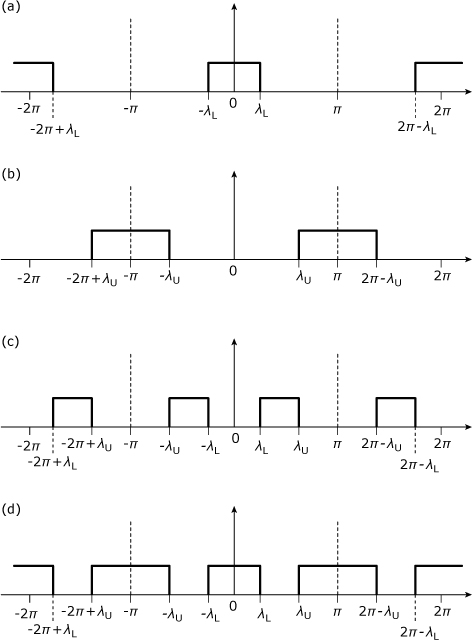Note 35. Designing FIR Filters: Basic Window Method
The window method of FIR design is based on the fact that the frequency response of a digital filter is periodic, and therefore can be represented as a Fourier series. A template for the desired frequency response is selected and expanded as a Fourier series. This expansion is then truncated to finite-number terms by multiplying the sequence of Fourier series coefficients with a sequence of samples obtained from a time-limited window function. The resulting finite sequence of terms is then used as the coefficients for an FIR filter. This filter has a frequency response that approximates the original desired response. When a rectangular window is used to truncate the coefficient sequence, the window method is called the Fourier series method.
References
1. D. Slepian and H. Pollak, “Prolate-Spheroidal Wave Functions, Fourier Analysis and Uncertainty-I,” Bell Syst. Tech. J., vol. 40, January 1961, pp. 43–64.
2. J. F. Kaiser, “Digital Filters,” Chapter 7 in System Analysis by Digital Computer, F. F. Kuo and J. F. Kaiser eds., John Wiley & Sons, 1966.
3. J. F. Kaiser, “Nonrecursive Digital Filter Design Using the I0sinh Window Function,” Proc. 1974 IEEE Int. Symp. on Circuits and Syst., April 22–25, 1974, pp. 20–23.
4. A. Antoniou, Digital Filters: Analysis and Design, McGraw-Hill, 1979.
5. f. j. harris, “On the Use of Windows for Harmonic Analysis with the Discrete Fourier Transform,” Proc. IEEE, vol. 66, no. 1, January 1978, pp. 51–83.



